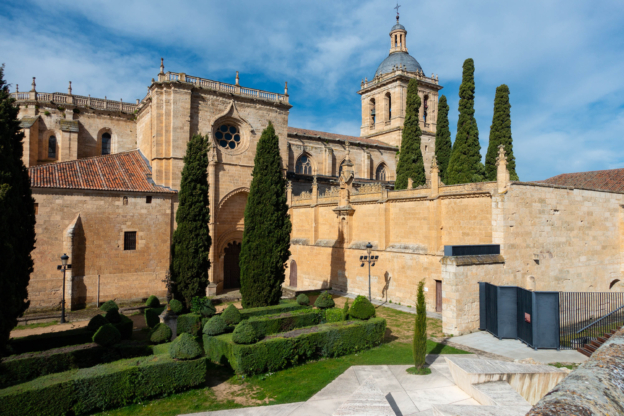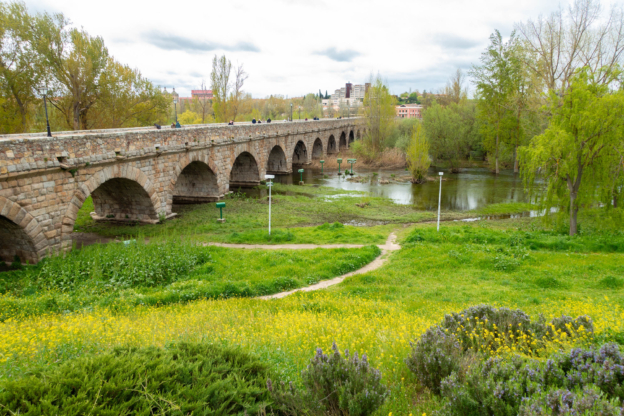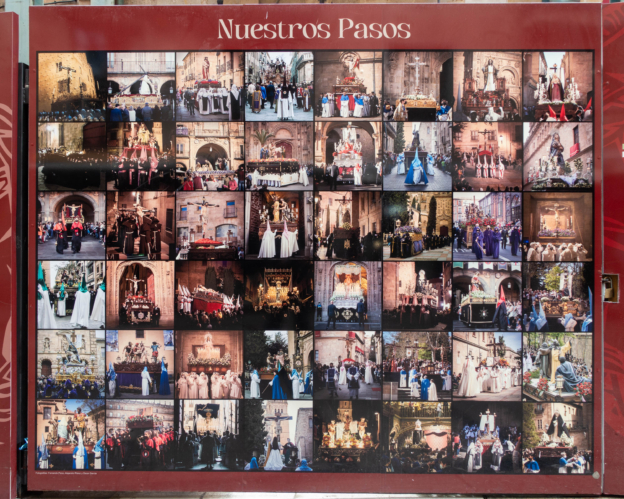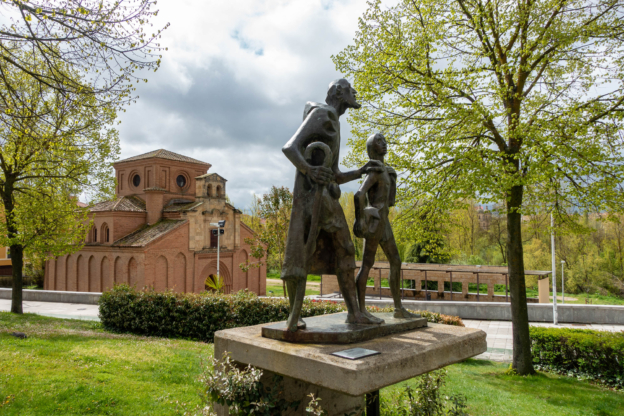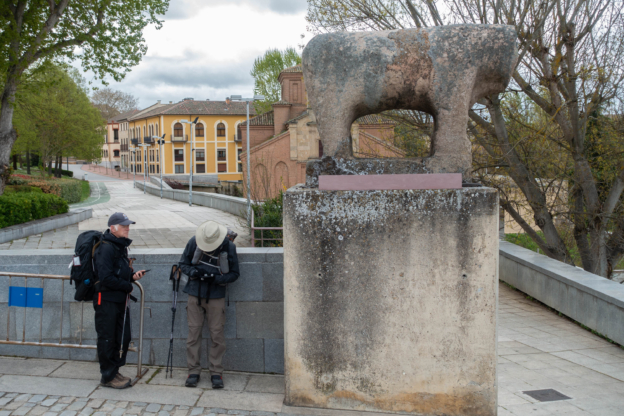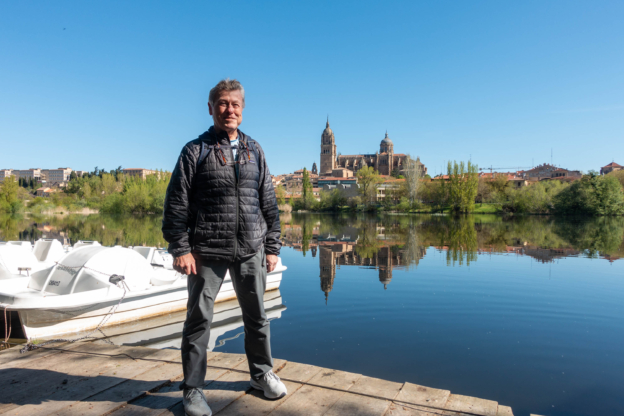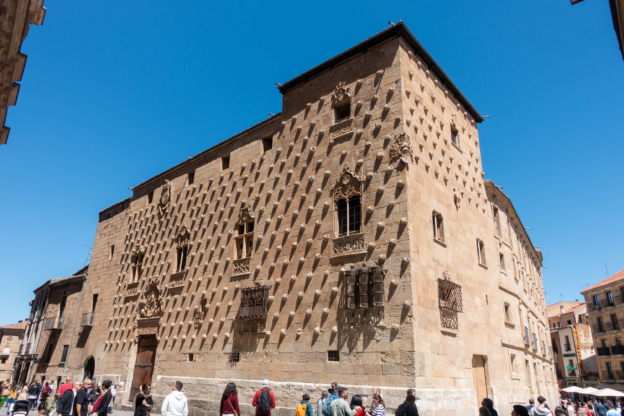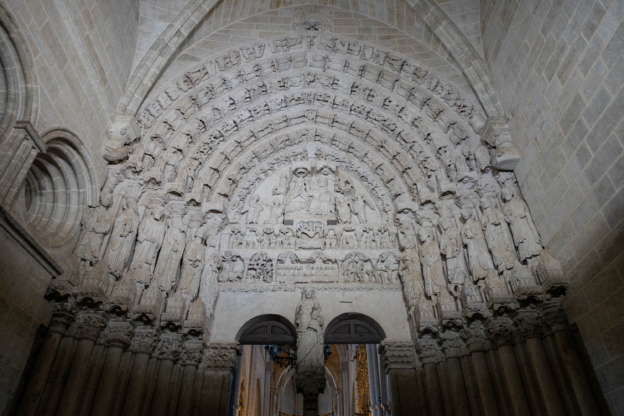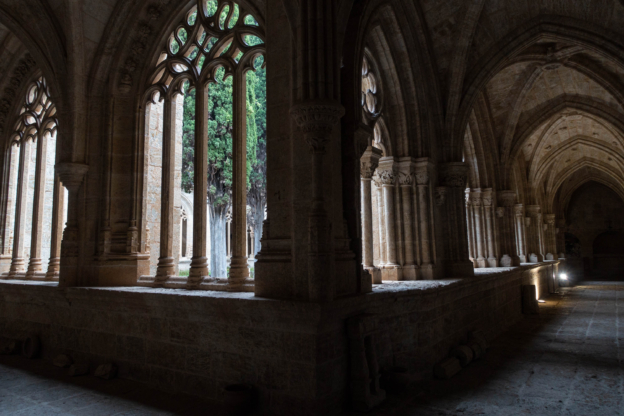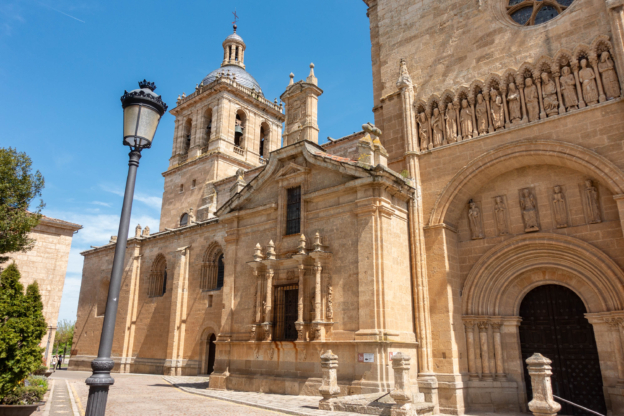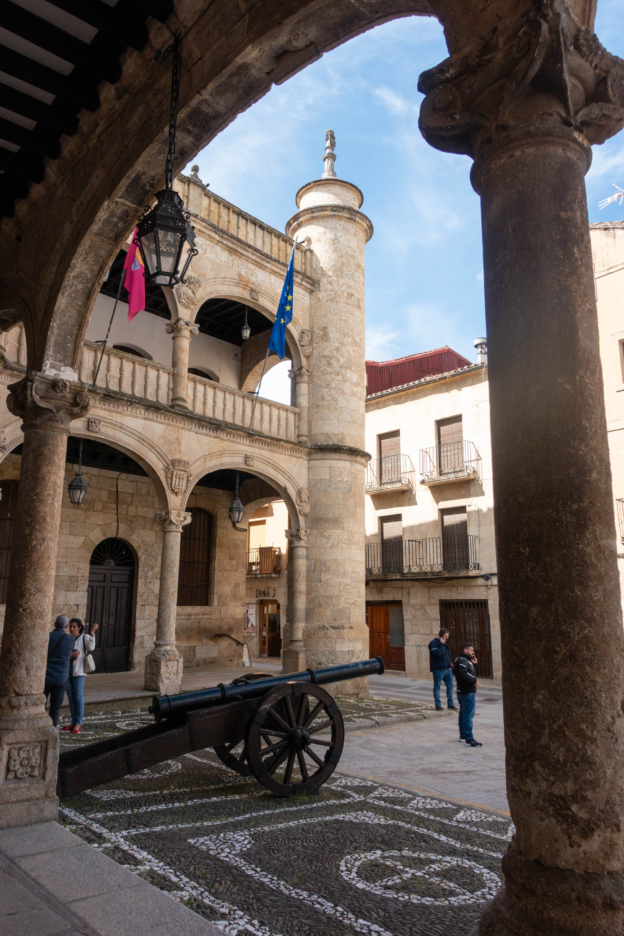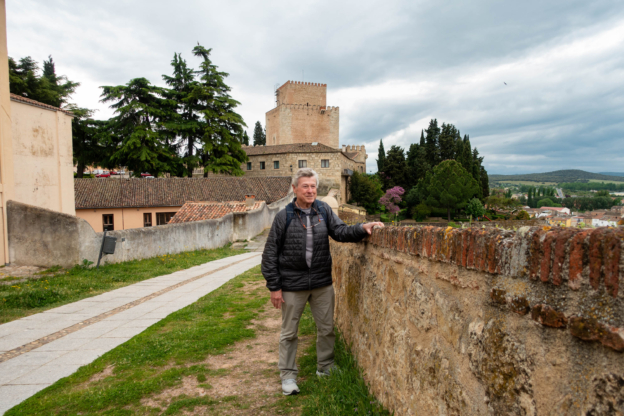All Photos Are Below the Travelogue Text
Click on Any Photo To Open Slide Show
To print the travelogue, right click anywhere on the page. Choose "Print" from your browser dialog box. You can choose Save to PDF in the browser print window.
Share your thoughts.
Email Dave - coxdavid55@hotmail.com
I last wrote that in Salamanca I had rented, for 2 weeks, a 2-bedroom completely refurbished apartment inside a 16th century Renaissance building by the Plaza Mayor and Market; I was looking for the first week to see numerous “Pasos” (floats), where the devout “cofradias” (brotherhoods) solemnly parade through the narrow streets and alleys, day and night to the beat of somber drums, carrying the huge decorated wooden floats with scenes mostly of Jesus’ suffering and death; these somber celebrations are famous in Spain and have occurred for hundreds of years for Easter week. Unfortunately, the entire week up to Easter Sunday noon, was non-stop frigid rain and heavy sleet with blustery winds howling through the narrow streets (at sea these would be called squalls). Basically, all processions were cancelled as they started, as they could not carry the heavy and ornately decorated floats in the wind and rain. What a disappointment. Then Sunday noon it cleared, and the weather was spectacular for the week after Easter. Bad luck for the processions. With no current Pasos’ photos, I have included below a photo of a photo board the Salamanca tourist agency posted on the Rua Mayor to show tourists and locals alike what to expect.
With the heavy rains which have covered much of South Western-Central Spain, the Rio Tormes had crested at a very high level but not done any damage, and provided beautiful views across to the ancient cathedrals. Everywhere were a dozen varieties of Spring flowers in bloom, including my Mediterranean favorites the blood red wild poppy blooms. I previously wrote that I was reading a number of books this trip related to my destinations. So – speaking of the Rio Tormes, I finished the short ancient book Lazarillo de Tormes, written anonymously and published in 1554, which features Salamanca as the original start of the tale. There is now a new bronze statue of Lazarillo and his first blind master at the start of the Roman bridge over the Rio Tormes, just behind the 2,500-year-old stone bull which features early in the story. I have also now finished both parts of the very long Don Quixote by Cervantes, first part published in 1605, which refers to the book Lazarillo. Although I have seen some scholars claiming the second part of Cervantes’ tale, published in 1615, as superior, I totally disagree. The first part is ever so much cleverer and amusing; the second part for me was a bit of a drag and unfunny. (I need to mention again, I have tried on occasion to read bits of both books in the original Spanish, but the Spanish is very ancient and dense, and so one must search for the best of dozens of translations.)
My apartment had, of the total six balconies, two glass paneled doors and balconies over the small Sexmeros Plaza with its water fountain. I used Perplexity AI to try and determine the origin of the name “Sexmeros” – the AI answer was, that though there was no current translation or information, the Romans when in Salamanca had a form of taxation called “Sexmos”, and the AI thought it likely that my Plaza was named by the Romans for the location of this tax collection, and the name has survived 2,000 years even though no one currently knows or remembers the origin – I find this interesting.
As with Cordoba, I have lived in and traveled to Salamanca numerous times in the past 22 years, and have reported extensively on the town’s history and structures, so will refrain from repeating here.
The exchange rate for buying the Euro with US dollars has increased exactly 10% since I made my trip plans and bought the air tickets. All the other payments such as lodging, food and train travel are current so my trip now is costing 10% more than anticipated.
I traveled by regional bus from Salamanca to Ciudad Rodrigo shortly after noon on April 28. Nothing out of the ordinary presented itself until arrival in Ciudad Rodrigo. I went to two different restaurants near the bus station – both had outside tables crowded with local workers – but was told no hot food was available and I was not allowed inside. Confused, I assumed the restaurants ran out of their specials, and walked to my hotel. There I found the young girl behind the counter giddy with trying to explain that all of Europe was without power in a massive cyber strike. Well, that was the beginning of the total blackout for all of Spain and Portugal and southern parts of France, and also the beginning of rampant speculation and misinformation. Small, ancient, fortified Ciudad Rodrigo had no traffic lights or elevators or underground metro, or trains, or traffic – bottom line I managed to find an open fruit vegetable stand and bought some provisions and wine, then sat on my outside balcony until evening when power came back on at 7pm. The larger cities had chaos for 2 days with the entire shutdown of the underground metro systems, traffic controls, elevators ( I read Madrid had over a thousand elevator evacuations) and trains (I heard Spain had over 200 trains stranded in between towns and in need of evacuations), etc. I realized how primitive things seemed with no power, meaning no TV news, no internet, no cellular phone service, no messaging. Basically, no idea of what was going on until power was restored.
Ciudad Rodrigo dates to before Roman times, but is most remarkable for its 35-foot tall, 40 foot-thick walls and ramparts which completely surround the ancient parts of the small city. Just beyond the walls, trenching drops down another 15 feet or so, which trenches then are surrounded by secondary walls. It seems impenetrable, but modern warfare (19th Century) cannons made all the difference. An early battle occurred here in 1814 when Sir Wellington’s forces took out Napolean’s French forces by use of days of cannon fire which ultimately breached the 40-foot thick walls. The town’s 13th century cathedral sits just inside the Northwestern walls, and Wellington’s forces fired perhaps thousands of cannon rounds to breach the walls near the Cathedral. Many of the rounds went just over the top of the walls, and the front of the Cathedral is pockmarked from the battering.
My first day was dark, and my third day was heavy rain all day, so unfortunately, I had only one nice day of exploration, but the fortified town is so small I made it around both the upper walls and lower walls, as well as getting semi-lost on the numerous winding alleys and streets.
I currently am in Valladolid for 4 days, then will travel for the first time ever to Oviedo in the Northwest. Later. Dave
- Puente Romano over Rio Tormes, Salamanca, Spain
- Photos of Easter Pasos of prior years, Salamanca, Spain
- bronze honoring Lazarillo de Tormes & blind master, Salamanca, Spain
- 2 Peretrinos to Santiago before stone veraco pre Roman, Salamanca, Spain
- Catedral Viejo in front of Nuevo tower, Salamanca, Spain
- Dave with Catedrales beyond Rio Tormes, Salamanca, Spain
- Casa Las Conchas, Salamanca, Spain
- Catedral de Santa Maria 12th – 14th C Romanesque & Gothic, Ciudad Rodrigo, Spain
- Portico del Perdon, Catedral de Santa Maria, 12th – 14th C Romanesque & Gothic, Ciudad Rodrigo, Spain
- Claustro, Catedral de Santa Maria, 12th – 14th C Romanesque & Gothic, Ciudad Rodrigo, Spain
- Catedral de Santa Maria 12th – 14th C Romanesque & Gothic, Ciudad Rodrigo, Spain
- Casa Consistorial 16th C now Ayuntamiento, Plaza Mayor, Ciudad Rodrigo, Spain
- Dave walking SW fortification with Castillo del Enrique II in back, Ciudad Rodrigo, Spain
To print the travelogue, right click anywhere on the page. Choose "Print" from your browser dialog box. You can choose Save to PDF in the browser print window.
Share your thoughts.
Email Dave - coxdavid55@hotmail.com
